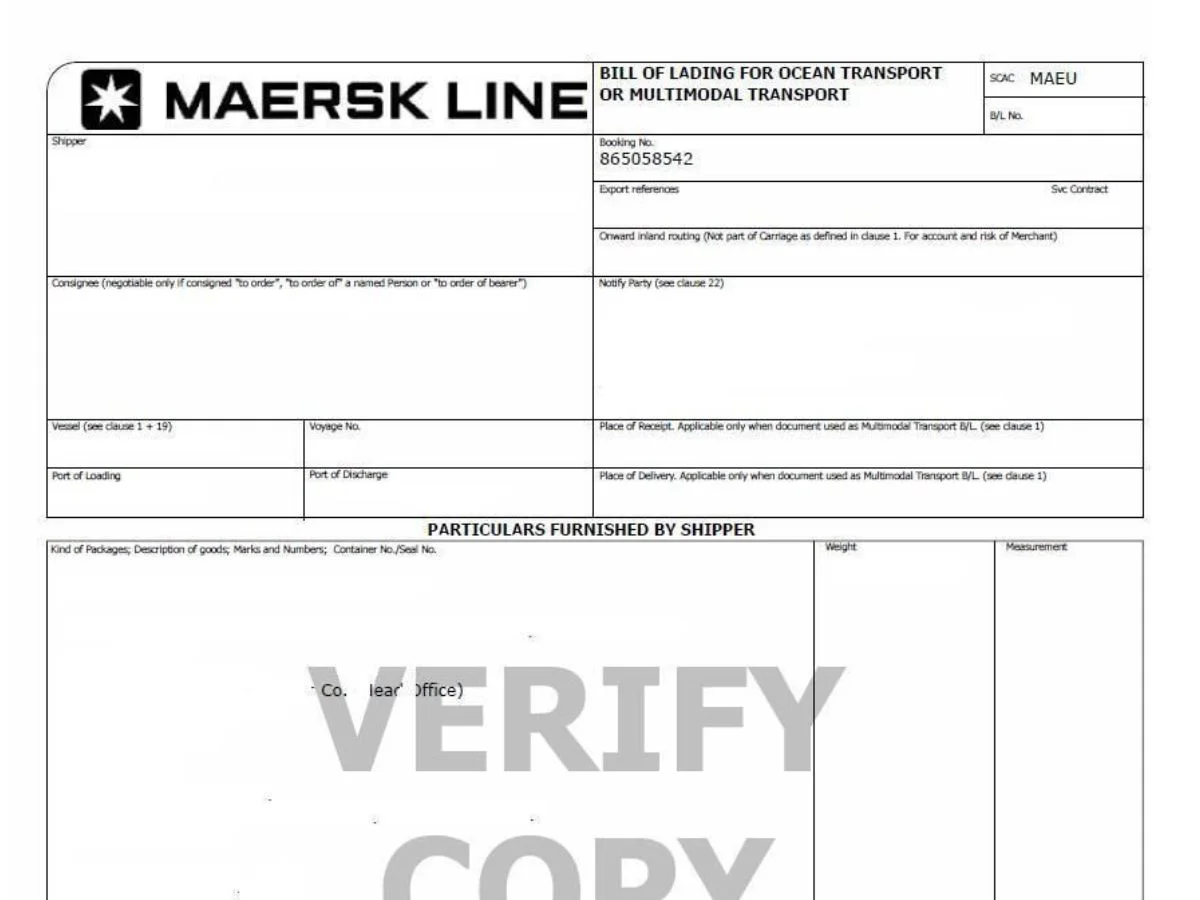What is a B/L (bill of lading)?
B/L bill of lading (bill of lading) is a document used as a bill of lading in maritime transport. It is confirmation that the cargo, in this case a container, has been loaded onto the ship. The bill of lading is not an agreement or contract for the carriage of cargo, but merely proves that the goods have been accepted and such a contract has been concluded. In order to receive the goods at the port, it is necessary to present the original bill of lading. It is for this reason that the bill of lading is a security, for whoever holds the original will be able to dispose of the goods and receive the cargo at the port.
Following article § 131 from the Maritime Code:
"The bill of lading is evidence of the acceptance of the cargo marked therein on board the ship for carriage and is a document of authority to dispose of that cargo and to receive it."
What are the types of bills of lading?
There are a bit of categories of bills of lading and we distinguish them by:
The issuer of the bill of lading whether it be the shipowner or the shipper:
MBL or Master Bill of Lading means a bill of lading issued by a shipowner
HBL or House Bill of Lading is the bill of lading issued by the shipper
Consignee of cargo
- Registered bill of lading (straight B/L) - possibility of transfer to other persons by assignment of rights
- Bill of lading on order (to order B/L) - transfer by endorsement (formal notice of transfer of ownership to another person)
- Bearer bill of lading (to bearer B/L) - without indication of the recipient, transferred by simple transfer to another entity
State of load
Clean bill of lading - means that no damage or destruction has been noted on the cargo received
Dirty bill of lading - means that the cargo accepted for carriage has some damage or deterioration
On the mode of transport
Depending on whether it is direct or indirect freight, we distinguish between:
- ordinary - the itinerary is direct and involves transport by a single vessel
- direct - the cargo route can be covered by multiple vessels with transhipments in ports
SeaWayBill or Express Bill of Lading
A shipper of goods who sends his goods in a container and receives full payment for them can send the consignee of the goods a document called a SeaWayBill or Express Bill of Lading, which is a bill of lading on the basis of which the cargo can be collected at the port without having to present the original.
Telex release ( telex)
This is a document that authorises the release of the container at the port and the receipt of the goods. Based on this release, the consignee can collect the goods at the port from the carrier.
What should a sea bill of lading document contain?
The maritime bill of lading, or so-called Bill of Lading (B/L), is an important document in maritime transport. It should contain the following information:
- Data of the shipowner
- Details of the shipper (exporter / shipper ) and the receiver (importer / consignee) of the goods.
- Description of the cargo, including type of goods, quantity, weight, volume and any special information (e.g. special markings, danger).
- Port of loading and port of destination.
- Dates of loading and expected delivery.
- INCOTERMS delivery terms and conditions (e.g. FOB, CIF, EXW).
- Cargo handling instructions (e.g. method of packaging, labelling).
- Payment terms and other commercial clauses.
- Signature of the master of the vessel or other representative.
Who issues the sea bill of lading and when?
The bill of lading is issued in several numbered originals, specifically 3, and at least one of these is necessary for the release of the cargo . Copies are also possible, however, they do not give receipt, but only serve the internal needs of the importer or exporter.
The document is issued by the aramtor or freight forwarder and the holder of the bill of lading has ownership rights over the goods.
What if a bill of lading is lost?
The sea bill of lading is usually issued in 3 numbered copies and each is an original. As the bill of lading is a security paper it cannot be lost and its absence raises considerable complications. If lost, the shipowner should be contacted immediately and given specific instructions on what to do. It may be that the shipowner will require a bank guarantee and the payment of a certain sum.
Summary
In summary, in sea freight when the shipper delivers the goods to the port it is the B/L that is the transport document and in the English law system allows the cargo to be collected at the port.
A bill of lading is not a contract of carriage as it is understood by some, but a document that states the cargo accepted on board. The maritime industry has thus facilitated international trade in goods.
In order for us to be able to talk about receiving the cargo at the port of destination we must have the original B/L or we can also use SeaWayBill or telex release .
If you are interested in other topics and the import and export of goods by sea, rail and air, check out our other posts.






